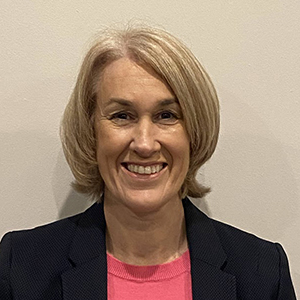How is Jisc supporting universities to make digital transformation achievable?

While it’s true that all universities are transforming digitally, the process is far from uniform.

Some higher education providers (HEPs) have well-developed plans, but for those still feeling their way, Jisc has a fresh set of resources. It comprises three elements: a framework, a maturity model and a guide.
This work has been developed with support, input and feedback from sector organisations such as Universities UK, Advance HE, UCISA, the Association of University Administrators, the Association for Learning Technology, plus a 200-strong sector-led working group.
Collated over the past year and with considerable engagement and buy-in from institutions, their key staff and professional bodies – we’re confident the guidance is of high quality and value.
And not just for the UK; we’re now being asked to share our advice on digital transformation in education with international colleagues.
A sector first
The first pieces of work were published earlier this year with the sector’s first framework for digital transformation in higher education.
The framework recognises that, while each institution’s digital journey will differ, there is a defined set of elements that must be considered as part of an organisation-wide digital transformation plan. These include:
- Effective digital leadership
- Appropriate investment
- Robust and secure infrastructure
- Stakeholder engagement
- Digitally capable staff and students
The framework is accompanied by materials to help assess digital maturity across all business activities, and to signpost support from UK sector bodies.
It aims to inform the development of strategic vision and planning, foster innovation, streamline business processes and operations, and develop partnerships for collaboration.
It also highlights how policies and processes might align to promote cross-team approaches that reduce complexity and fragmentation.
Later in September we’ll be publishing the final two sections of our digital transformation resource – a comprehensive guide and a maturity model.
Later in September we’ll be publishing the final two sections of our digital transformation resource – a comprehensive guide and a maturity model.
Assessing digital maturity
The model provides a structure to help HE providers assess their digital maturity across all aspects of their business.
It will help universities benchmark themselves against the sector and set their own baseline from which to move forward.
Defining digital maturity is an important step in producing a digital transformation strategy and creating actionable plans.
The model is supported by an action plan template and a set of guidelines. It describes how there are three levels of digital maturity, which can be assessed against each aspect of activity identified in the framework:
Emerging to established - reactive stage
- Lack of strategic digital leadership
- Short-term investment
- Unintegrated systems and operations
- Lack of innovation
- Lack of stakeholder understanding and engagement
- Dispersed, project-based digital activities
Established to enhanced - proactive stage
- Developing a proactive strategic approach
- Enabling effective digital leadership
- Making efforts to integrate systems and operations
- Engaging and upskilling all stakeholders
- Moving towards a service delivery model
Enhanced to mature - integrated stage
- Comprehensive and integrated strategic approaches
- Effective digital leadership
- Long-term, adaptable planning and investment
- Integrated and efficient systems and operations
- Engaged, informed and appropriately skilled stakeholders
- Partnership approaches to innovation
- Longer-term delivery model approaches (less project based)
As the sector becomes more familiar with using the model, we hope it will provide a common language for HE providers to discuss digital transformation and share best practices.
As the sector becomes more familiar with using the model, we hope it will provide a common language for HE providers to discuss digital transformation and share best practices.
We are particularly interested to find out how providers might use the toolkit to support digital transformation across their organisation, or in one area of work, no matter what their digital plan looks like, or at what stage of development.
Organisations just starting on the digital transformation path could find the maturity model and framework a useful starting point, while others that have already agreed a plan could use our resources to convert that vision into action.
The materials could also help HE providers with highly developed digital maturity to conduct a review with a view to continual improvement.
Further information and how to get involved
To hear more about how Jisc can support HE providers with digital strategies, join our session at the Association of Learning Technology (ALT) annual conference (6 Sept) called ‘Making digital transformation achievable - critical foundations for success’, delivered by Jisc’s Sarah Knight, Simon Birkett and Elizabeth Newall, with Lou McGill, a consultant who authored the guide and model.
HE providers interested in using the maturity model to identify their level of maturity are invited to express an interest to work with Jisc by getting in touch with sarah.knight@jisc.ac.uk or simon.birkett@jisc.ac.uk
Submit your details to notified of the release of the new guide.
About the author

I am head of learning and teaching transformation in higher education and research. My team and I support universities with their digital transformation agenda. This includes the supporting the use of the framework for digital transformation in higher education and the development of a maturity model for digital transformation. Other activities in my portfolio include projects exploring future trends for assessment and feedback, researching international students' digital experiences and supporting staff with designing learning for beyond blended.